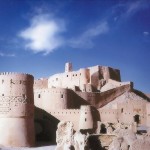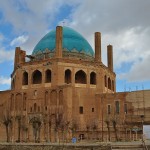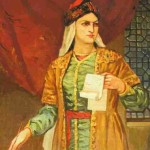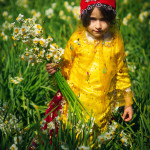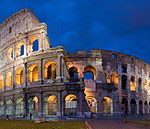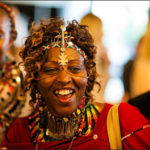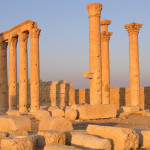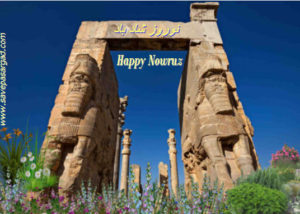 Nowruz is first day of Spring and the beginning of the Iranian year . Nowruz is celebrated on the day of the vernal equinox , on 20th March or the previous / following day depending on where it is celebrated. Nowruz is celebrated and observed by Iranian people as well as several other countries across Asia including Afghanistan, Turkey, Azerbaijan, Georgia, Tajikistan and many more. The new year starts at the moment the Sun crosses the celestial equator and equalizes night and day or exactly when the Earth has completed one cycle around the Sun.
Nowruz is first day of Spring and the beginning of the Iranian year . Nowruz is celebrated on the day of the vernal equinox , on 20th March or the previous / following day depending on where it is celebrated. Nowruz is celebrated and observed by Iranian people as well as several other countries across Asia including Afghanistan, Turkey, Azerbaijan, Georgia, Tajikistan and many more. The new year starts at the moment the Sun crosses the celestial equator and equalizes night and day or exactly when the Earth has completed one cycle around the Sun.
The celebration has its roots in Ancient Iran. Due to its antiquity, there exist various
foundation myths for Nowruz in Iranian mythology. The Shahnameh dates Nowruz as
far back to the reign of Jamshid, who in Zoroastrian texts saved mankind from a killer
winter that was destined to kill every living creature. In the Shahnameh and Iranian
mythology, Jamshid is credited with the foundation of Nowruz. In the Shahnama,
Jamshid constructed a throne studded with gems. He had demons raise him above the
earth into the heavens; there he sat on his throne like the sun shining in the sky. The
world’s creatures gathered in wonder about him and scattered jewels around him, and
called this day the New Day or Now-Ruz. This was the first day of the month of
Farvardin (the first month of the Persian calendar). On Nowruz, families gather together
to observe the rituals and celebrate the beginning of the new year.
In addition, it is believed that originally the celebration was the holiest Zoroastrian
festival, and Nowruz is believed to have been invented by Zoroaster himself, although
there is no clear date of origin. Since the Achaemenid era, the official year has begun
with the New Day when the Sun leaves the zodiac of Pisces and enters the zodiacal sign
of Aries, signifying the Spring Equinox.
International Nowruz Day was proclaimed by the United Nations General Assembly, in
its resolution A/RES/64/253 of 2010, at the initiative of several countries that share this
holiday (Afghanistan, Albania, Azerbaijan, the Former Yugoslav Republic of Macedonia,
India, Iran, Kazakhstan, Kyrgyzstan, Tajikistan, Turkey and Turkmenistan.
International Women's Day
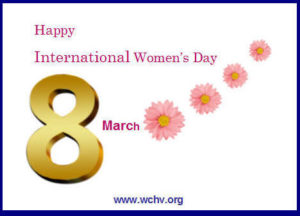 International Women’s Day (IWD) is celebrated annually on March 8.
International Women’s Day (IWD) is celebrated annually on March 8.
The day has occurred for well over a century, with the first IWD gathering in 1911.
The day is not country, group or organization specific – and belongs to all groups
collectively everywhere. Gloria Steinem, world-renowned feminist, journalist and activist once explained, “The story of women’s struggle for equality belongs to no single feminist nor to any one organization but to the collective efforts of all who care about human rights.” So make International Women’s Day your day and do what you can to truly make a positive difference for women.
What is International Women’s Day?
International Women’s Day (March 8) is a global day celebrating the social, economic,
cultural and political achievements of women. The day also marks a call to action for
accelerating gender parity. No one government, NGO, charity, corporation, academic institution, women’s network or media hub is solely responsible for International Women’s Day. Many organizations declare an annual IWD theme that supports their specific agenda or cause, and some of these are adopted more widely with relevance than others. International Women’s Day is a collective day of global celebration and a call for gender parity.
International Women’s Day is all about unity, celebration, reflection, advocacy and action– whatever that looks like globally at a local level. But one thing is for sure, International Women’s Day has been occurring for well over a century – and continues to grow from strength to strength. Learn about the values that guide IWD’s ethos.
Happy Sadeh, Iranian Fire festival
 Sadé festival (in Persian: (جشن سده)is an ancient Iranian tradition celebrated 50 days (Jan
Sadé festival (in Persian: (جشن سده)is an ancient Iranian tradition celebrated 50 days (Jan
30th) before Nowruz (Iranian New year). Sadeh in Persian means “hundred” and refers
to one hundred days and nights past the end of summer (or the beginning of long-winter
known to start at the end of summer in ancient Iran). Sadeh is a mid winter festival that
was celebrated with grandeur and magnificence. It was a festivity to honor fire and to
defeat the forces of darkness.
Happy New Year 2019!
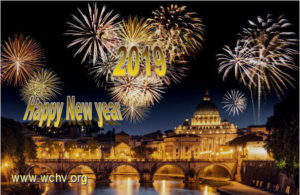 Dear Friends, and Supporters of World Cultural Heritage Voices.
Dear Friends, and Supporters of World Cultural Heritage Voices.
On behalf of our colleagues and volunteers at WCHV, and on the occasion of the Global New Year of 2019, we would like to extend our regards and best wishes for a Happy New Year. Thank you for your support of WCHV, which has been so instrumental in achieving our goals and mission.
We will come with brightness and kindness
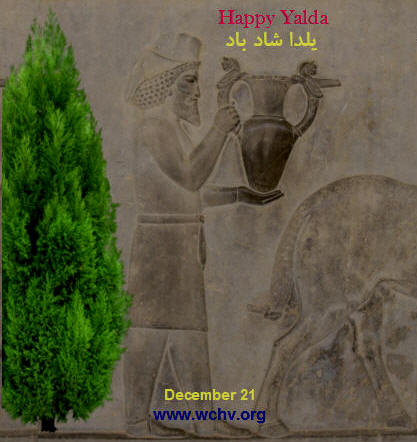
Once again, we are on the verge of the Persian celebration of Yalda, a
festival that has major significance in Iranian culture. Yalda is the only Iranian festivity that emphasizes the audacious conflict between light and dark emphasizing the beginning of longer days and shorter nights.
For centuries, at the height of the chilly winter nights, there is a new hope in the hearts of the Persians; the hope that Yalda, along with the elements of nature, simply reminds us that just like the end of darkness, it is possible to end sorrow and anguish in the face of the kindness of the sun, which is the eternal gem of our culture.
And now everything indicates that once again the force of light,brightness and joy will end the bitter and dark times.
The Pasargad Heritage Foundation, while congratulating you on the occasion of the Persian Yalda celebration, invites everybody to celebrate this national festivity.
Let’s ome along and celebrate Yalda by the Evergreen and with the army of light and kindness save our land from the evil of darkness.
From the Pasargadae Heritage Foundation
ShokoohMirzadegi
December 20.2018
Happy Cyrus the Great Day Oct. 29
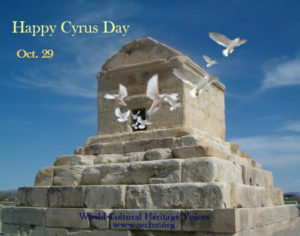 This year, the twenty-ninth day of October 2018 coincides with the annual celebration of “Cyrus the Great Day” by Iranian people and many friends of culture across the globe. In 2005, the Pasargad Heritage Foundation – the first international NGO for preservation of the cultural heritage of Iran- that introduced the idea. At the time, Cyrus’ mausoleum in Iran- a monument registered on the UNESCO’s world heritage list – was in danger of being inundated and eventually destroyed. However, the hard work of this Foundation and timely intervention of UNESCO, human rights activists and organizations removed the danger and led to a world-wide recognition of Cyrus’ seminal contribution to the survival of our common human civilization.
This year, the twenty-ninth day of October 2018 coincides with the annual celebration of “Cyrus the Great Day” by Iranian people and many friends of culture across the globe. In 2005, the Pasargad Heritage Foundation – the first international NGO for preservation of the cultural heritage of Iran- that introduced the idea. At the time, Cyrus’ mausoleum in Iran- a monument registered on the UNESCO’s world heritage list – was in danger of being inundated and eventually destroyed. However, the hard work of this Foundation and timely intervention of UNESCO, human rights activists and organizations removed the danger and led to a world-wide recognition of Cyrus’ seminal contribution to the survival of our common human civilization.
History of the “Declaration of Cyrus The Great”
This document, known as “The Declaration of Cyrus the Great,” emphasized the removal of all racial discrimination and slavery, and bestowing to all people, freedom to choose their places of residence, and practice their own chosen faith and religion, therefore, attempting to create peace amongst all nations. This Declaration could actually be considered a present from the Iranian people to all humanity, expressed through the words of Cyrus, the founder of the first empire in the Iran. In 1971, the general assembly of the United Nations recognized this declaration as the first Declaration of Human Rights.
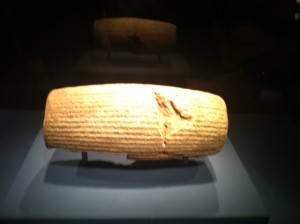
The Cyrus Cylinder marks a “fundamental shift in Middle Eastern history:” the creation of the largest empire the world had ever seen, up until that point. Cyrus the Great’s reign began with his invasion of Babylon in 539 BCE. He ruled over the entirety of the eastern Mediterranean, effectively creating the Middle East as we know it today. The empire spanned from Libya and Turkey in the West, to Afghanistan in the East. The Cyrus Cylinder itself functioned like a “press release”, notifying the public that it had a new ruler with new ideas.
- Given the multilingual, multifaith, and multicultural nature of his vast empire, Cyrus the Great was faced with the unique challenge of developing an approach to governance that embraced diversity. According to Neil MacGregor, Director of the British Museum, the Cyrus Cylinder embodies the first state model based on diversity and tolerance of different cultures and religions. According to MacGregor, “What [the Cyrus Cylinder] represents is the first recognition that if you’re going to run a society with different languages [and] different beliefs, you cannot impose by force one system.” This system proved so successful that Cyrus the Great’s dynasty lasted for 200 years, until Alexander the Great invaded the empire. His rule, aggressive and ineffective, caused the hitherto expansive empire to fragment.
Cyrus the Great’s principles of governance, as laid out in the Cyrus Cylinder, were an important influence on Western leaders. Not only did Thomas Jefferson own two copies of Xenophon’s biography of Cyrus the Great, Cyropaedia, but the Cylinder’s ideas gained widespread popularity among political thinkers in Europe and the United States during the 18th century Enlightenment.
After the 1917 Balfour Declaration, which announced the British government’s support for the Zionist cause, Jewish households across Europe displayed images of Cyrus the Great alongside pictures of King George V. Cyrus the Great is credited with freeing Babylon’s Jewish prisoners, previously captured by Nebuchadnezzar, who then returned to their homeland to reestablish their religious practices and rebuild the temple in Jerusalem.
The story of Cyrus the Great freeing the Jewish prisoners of Babylon is foundational to Jewish history, and is also told in the Bible’s Old Testament. The biblical prophet Isaiah lauds him and calls him a messiah, meaning “anointed” in Hebrew. In the biblical context, Cyrus the Great is viewed as chosen by the Judeo-Christian god for the distinct purpose of salvation. This differs from the Cylinder’s telling of the event, in which Marduk, the Babylonian god, guides him.
The International Day of Friendship
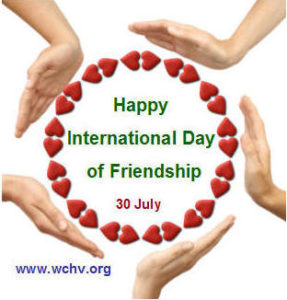 Our world face many challenges, crises and forces of division — such as poverty, violence, and human rights abuses — among many others — that undermine peace, security, development and social harmony among the world’s peoples.
Our world face many challenges, crises and forces of division — such as poverty, violence, and human rights abuses — among many others — that undermine peace, security, development and social harmony among the world’s peoples.
To confront those crises and challenges, their root causes must be addressed by promoting and defending a shared spirit of human solidarity that takes many forms — the simplest of which is friendship.
Through friendship — by accumulating bonds of camaraderie and developing strong ties of trust — we can contribute to the fundamental shifts that are urgently needed to achieve lasting stability, weave a safety net that will protect us all, and generate passion for a better world where all are united for the greater good. .UN
Background
The International Day of Friendship is an initiative that follows on the proposal made by UNESCO and taken up by the UN General Assembly in 1997 (A/RES/52/13), which defined the Culture of Peace as a set of values, attitudes and behaviours that reject violence and endeavour to prevent conflicts by addressing their root causes with a view to solving problems.
In its resolution of 1998, proclaiming the International Decade for a Culture of Peace and Non-Violence for the Children of the World (2001–2010) (A/RES/53/25), the General Assembly recognized that enormous harm and suffering are caused to children through different forms of violence. It emphasized that the promotion of a culture of peace and non-violence should be instilled in children through education. If children learn to live together in peace and harmony that will contribute to the strengthening of international peace and cooperation.
The Declaration and Programme of Action on a Culture of Peace (A/RES/53/243) adopted in 1999 set 8 areas of action for nations, organizations and individuals to undertake in order for a culture of peace to prevail:
• foster a culture of peace through education;
• promote sustainable economic and social development;
• promote respect for all human rights;
• ensure equality between women and men;
• foster democratic participation;
• advance understanding, tolerance and solidarity;
• support participatory communication and the free flow of information and knowledge;
• promote international peace and security.
The International Day of Friendship is also based on the recognition of the relevance and importance of friendship as a noble and valuable sentiment in the lives of human beings around the world.
The International Day of Friendship was proclaimed in 2011 by the UN General Assembly with the idea that friendship between peoples, countries, cultures and individuals can inspire peace efforts and build bridges between communities.
The resolution (A/RES/65/275) places particular emphasis on involving young people, as future leaders, in community activities that include different cultures and promote international understanding and respect for diversity.
The Day is also intended to support the goals and objectives of the Declaration and Programme of Action on a Culture of Peace and the International Decade for a Culture of Peace and Non-Violence for the Children of the World (2001-2010).
To mark the International Day of Friendship the UN encourages governments, international organizations and civil society groups to hold events, activities and initiatives that contribute to the efforts of the international community towards promoting a dialogue among civilizations, solidarity, mutual understanding and reconciliation.
World Population Day
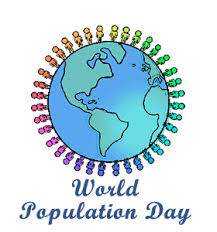 The World Population Day is a United Nations’ initiative celebrated on the 11th of July every year. This day aims at spreading awareness about the exploding world population and the importance of reproductive health. World Population Day 2018 observes the theme, “Family planning is a human right.” For the first time, this day was celebrated in the year 1989. The Governing Council of the United Nations’ Development Program initiated this due to the population toll in the year 1987. It had already crossed the 5 billion mark and exploding world population had indeed become a serious cause of concern. Therefore, this day was initiated to combat the issue of growing population and raise awareness among the public about the same. World Population Day, on a vast scale, focuses on the need and importance of controlling the increasing world population. World Population Day 2018, however, focuses on the importance of family planning. The slogan, “Family planning is a human right,” for the first time, gives response to a 50-year-old legislation which states that women and girls can refuse to have multiple pregnancies placed too close, if they wanted.
The World Population Day is a United Nations’ initiative celebrated on the 11th of July every year. This day aims at spreading awareness about the exploding world population and the importance of reproductive health. World Population Day 2018 observes the theme, “Family planning is a human right.” For the first time, this day was celebrated in the year 1989. The Governing Council of the United Nations’ Development Program initiated this due to the population toll in the year 1987. It had already crossed the 5 billion mark and exploding world population had indeed become a serious cause of concern. Therefore, this day was initiated to combat the issue of growing population and raise awareness among the public about the same. World Population Day, on a vast scale, focuses on the need and importance of controlling the increasing world population. World Population Day 2018, however, focuses on the importance of family planning. The slogan, “Family planning is a human right,” for the first time, gives response to a 50-year-old legislation which states that women and girls can refuse to have multiple pregnancies placed too close, if they wanted.
What is the importance of World Population Day?
The primary aim of this initiative is to increase awareness about reproductive health problems among the people. This is due to the fact that a large number of pregnant women succumb to poor reproductive health. Research shows that 800 women die every day due to the process of birthing a baby. Therefore, the primary aim and importance of this day is to get more and more people to know how to boost their reproductive health pay attention on the importance of family planning.
World Population Day is the celebration of awareness; one which tries to get people to know and learn about population issues. Population issues include things like family planning, human rights, right to health, the baby’s health, gender equality, child marriage, use of contraceptives, sex education, knowledge about sexually transmitted disease, etc.
Sexuality-related issues need to be addressed between 15-19 years of age. This is due to the fact that 15 million pregnancies in the world take place in women of this age group. Out of these, 4 million pregnancies end in abortion due to pregnancy complication or other reproductive health-related issues.
Take a look at the many objectives of the World Population Day 2018:
1. This day is celebrated to empower both, young boys and girls.
2. Educating them about reasonable and youth-friendly techniques of avoid unwanted pregnancies at a young age.
3. Ensuring the access of primary education for both girls and boys.
4. Educating people to remove gender stereotypes from the society.
Also read: World Population Day: 11 Essential Facts You Must Know
5. Educating people about sexually transmitted infections and how they can be prevented.
6. Ensuring easy access to reproductive health care services to every couple.
7. Demanding certain laws for protecting the rights of a girl child.
Also read: 6 Things You Should Know About Sexually Transmitted Diseases
8. To offer knowledge about sexuality and continue delaying marriages until and unless one is able to understand the responsibilities which come along with it.
International Mother Earth Day
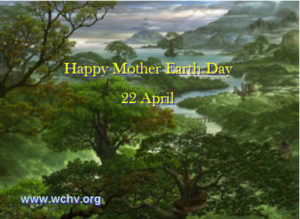 International Earth Day is celebrated on the 22 of April every year. Raising awareness of the challenges to the well-being of our planet and the life it supports.
International Earth Day is celebrated on the 22 of April every year. Raising awareness of the challenges to the well-being of our planet and the life it supports.
International Mother Earth Day (also known simply as Earth Day) recognises that the Earth and its ecosystems provide its inhabitants with life and sustenance. It also aims to raise awareness that humans have a collective responsibility to promote harmony with nature and to balance the economic, social and environmental needs of present and future generations. You can find out more about the Day on the UN’s International Mother Earth Day web pages.
‘Mother Earth’ is an ancient concept common to many languages and cultures, acknowledging our connection to the planet which sustains and nurtures us. Names include Pachamama (Andean culture), Terra (Ancient Rome) and Gaia (Ancient Greece). Gaia has also been used to name a theory (Gaia hypothesis) that life on Earth is organised into a complex a self-regulating system.
You could use International Mother Earth Day as a prompt to explore these concepts or simply to reflect on how our planet nurtures us and how we can care for it in return.






